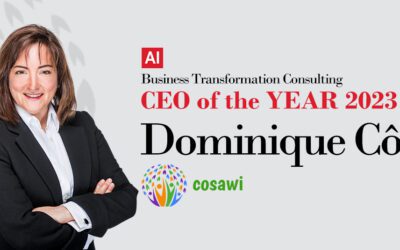Towards a healthier sales model
Pharma needs to transform the way it engages customers if it is to adapt to disruption in the healthcare landscape
For the past 20 years, I have been involved in pharma discussions regarding the need to radically change our sales and engagement model. The pharma industry has shifted from defi ning its customers as the physicians prescribing to patients to a much more complex environment – one where the customer is defined by a diverse group of players which participate in the decision-making around treatment and access to treatment. From my perspective, the ultimate customer, although indirectly, has always been the patient. This is now becoming increasingly important. However, in an industry that is being highly disrupted by the current technology explosion and remains under signifi cant regulatory pressure, both the demand and the uncertainty are making it easier said than done to engage in a cohesive fashion with the different customers.
Mega trends
These are a few of the mega trends that are forcing us to change our traditional engagement models:
• Value-based healthcare is putting pressure on contracting and pricing as we move away from price-per-unit and volume-based pricing to value outcome and risk sharing; this is resulting in increased sophistication and partnering.
• Technology – from 3D printing of tissues and organs to machine learning and AI. The days of being diagnosed using a mix of a scanning app connected to personal health
data via a virtual platform—where a doctor can diagnose and prescribe— to delivery of your prescription to your doorstep by drone may not be that far away. The echnology will also transform our landscape from drug discovery to commercialization, as well as how patients access our products and solutions. By 2020, chronic conditions like diabetes will be diagnosed in minutes using
cognitive systems.
• Patient empowerment. Today’s patient is becoming increasingly important as a decision-maker. Meanwhile, the defi nition of health is shifting from being illness free
to simply being well. It is also broadening – today the solution to a disease is not simply medication ut increasingly about a holistic approach that goes beyond the product to include devices, apps, environment, diet, and so on. Moreover, the overall solution is different for each patient, and getting more individualized.
• Competition landscape. Given this backdrop, pharma urgently needs to evolve how it partners around the basic issues and broad healthcare challenges. It is critical to create a more collaborative model aimed at curing illness and to provide holistic solutions to patients. All of his means that our competition is no longer solely the pharma industry, but technology companies and
startups as well. To be successful, we need to change our mindset to create partnership with organisations, which we formerly used to view as our competitors, in order to provide more value to the healthcare systems and their patients in a coordinated effort.
Updating our go-to-market model
In order to be able to face these changes and adapt to them, our go-to-market sales and engagement model will need to evolve as well. We will need to really start looking “outside in” and understand the broad view of our customers’ clinical, business, environmental and financial needs. We will need to look at our patients’ journeys and what is important to them, and then to explore how we can partner both within the organisation and externally to provide that holistic solution in a synergistic way. We will need to listen differently to bring simplicity and insight in a complex environment, understanding the whole customer, while also being proactive in identifying their challenges.
What does this mean for sales?
Our sales approach will have to change in three signifi cant ways:
1. Integration – We can expect to see a more integrated sales model aligning with the healthcare environment evolution. These will be based on account teams, where both the customer and the pharma put teams together to resolve issues and co-create solutions that have the most impact. These account teams are no longer the salesperson in a silo anymore, but a full crossfunctional team including enabling functions, marketing, procurement, alliances and so on; they bring their own thinking to the table to create innovative value with the external customer with the fl exibility of personalization for the patient through a holistic disease view.
2. New emerging customers – We need to embrace new, emerging customers that are becoming critically important in decision making, and continue to evolve in step with the evolution of the healthcare environment, including home management groups, healthcare businesses, and outsourcing businesses to name a few, and engage with multidisciplinary teams.
3. Globalisation – Despite years of looking at accounts defi ned by countries, we can expect to see more and more emerging accounts in the healthcare system that are regional and global; as with other industries’ strategic account models we will be breaking boundaries. This will require account management individuals who can understand the needs and priorities of these regional/global accounts and connect internally with the sales organization to offer a full account view and accompanying strategic planning. This will also need us to connect the dots between the customer organization and the often-complex internal organization, initiating a shift to mirror key customers in our own organization.
The business model shift in pharma will require companies not only to build their ability to look beyond the pill/devices and innovate in terms of the value they can offer, but to embrace a true internal transformation involving the whole organization. The need is for a cultural shift to get closer, more human for our customers and our customer’s customers – the patients. Pharma will need to enable the engagement models through people, technology and processes, and be driven by this. They will need to align their models with their respective healthcare environment, working collaboratively with their partners, competitors and customers to co-create solutions for the real needs of the patients. This will hopefully lead us back to a more human approach to medicine, spending more time focused holistically on the patient and also fulfi lling their unmet needs. We are going through exciting time where organizations that focus on this transformation will thrive. This is a great opportunity to make healthcare better for everyone, especially the patient: a role that we all fi nd ourselves in at one time or another.
About the Author
Dominique Côté brings 30 years of experience leading commercial teams in global pharmaceutical and biotech organizations. Her consultancy work is focused on Commercial Excellence, Executive coaching & leadership, KAM/SAM roadmaps & journeys, as well as Account based Marketing.
She is an accomplished international business leader, recognized as a chief architect of global account program journeys, leading corporate changes and cultural shifts for customer-centric innovation and patient value.
Dominique is a panelist and keynote speaker in Europe and the U.S. in the areas of commercial Excellence and Customer centricity. She writes and is published in journals like Journal of Sales Transformation, Velocity, and others on these topics.
Recent Posts
The Power of Account-Based Marketing: A Thales Case Study
By Dominique Côté CEO & Founder Cosawi Catherine Lapouge & Marine Bray-Bouineau Group Marketing and Sales Performance team Thales Pierre Schaeffer Chief Marketing Officer ThalesIn the work we do, we find fascinating to see that Marketing as a function is often missing...
Business Transformation Consulting CEO of the Year 2023
Dominique’s award-winning expertise and vision have earned her the prestigious recognition of Business Transformation Consulting CEO of the Year 2023. READ MORE
KAM Leader Series: Shaping Innovative Solutions
Co-authored by Tania Lennon, Global Space Lead, Talent Assessment and Leadership at ZS and Dominique Côté, CEO and Founder, Cosawi and Principal, The Summit GroupSAMA is proud to offer this 3rd article in the 4-part series on the importance of SAM / KAM leadership....




